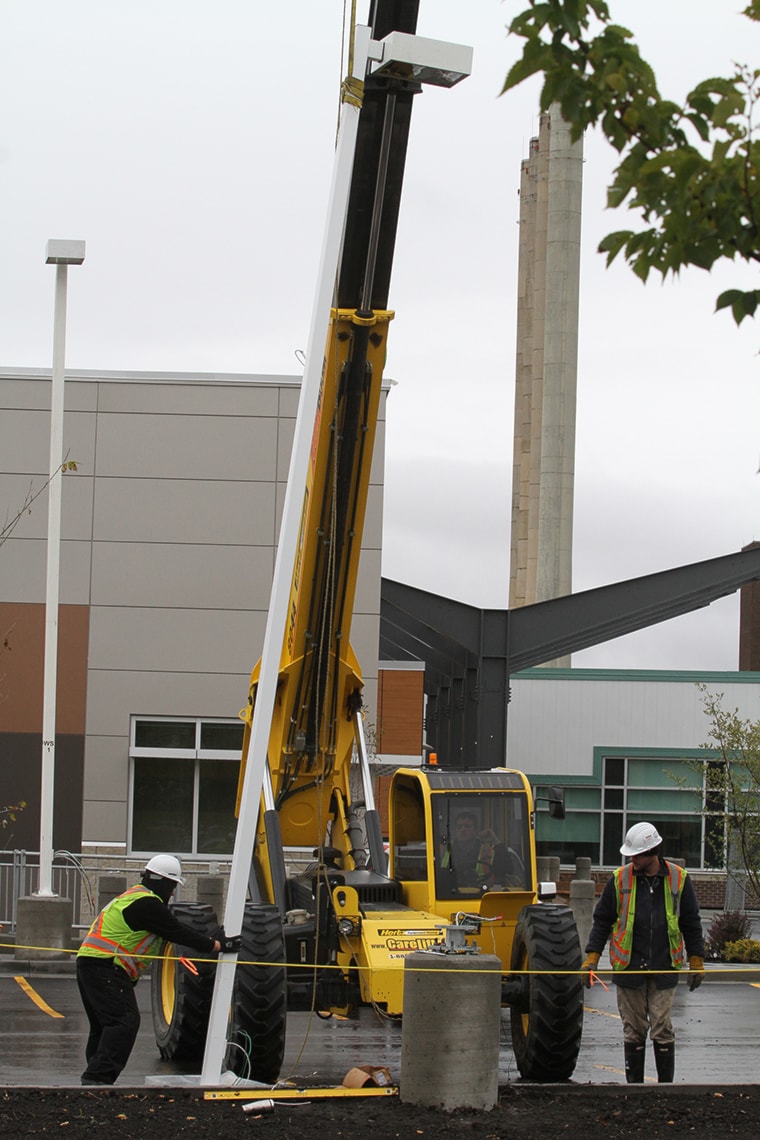After years of construction, Red Deer’s new and expansive $46-million Central Alberta Cancer Centre is set to officially open its doors in mid-November, bringing radiation treatment for local cancer patients closer to home and improving overall cancer care in the region.
“We are in the final stages, finishing up minor construction and deficiency work and putting all the furniture and equipment in right now. The next few weeks will be focused on staff training and process development,” said Mona Udowicz, the director of radiation therapy for Alberta Health Services and the project leader for the Alberta Radiation Therapy Corridor Project. She noted a grand opening and open house for the public is being scheduled for around the end of November.
Udowicz stopped in Red Deer on Tuesday morning to present an update on the centre at the annual general meeting for the Central Alberta Council on Aging.
“Approximately 50 per cent of patients who are diagnosed with cancer would benefit from a course of radiation therapy throughout their treatment and currently that is only offered in Calgary, Edmonton and, since 2010, Lethbridge as well,” Udowicz said.
Patients spend large amounts of time and money travelling to receive radiation in the larger centres as the treatment is given out in daily fractions and can take up to 39 days, she added.
“That’s hugely inconvenient. So it’s about bringing the care to the patient. We found a lot of patients will look for different treatment options to avoid having to travel to Calgary or Edmonton so we’re under-utilizing radiation therapy as a treatment aspect in Alberta.”
According to Udowicz, 22 per cent of Albertans had to travel over 100 km for cancer treatment before the corridor project kicked off in Lethbridge with the opening of a similar cancer centre. After the project’s planned expansion into Grande Prairie in 2017, Alberta Health Services estimates only eight per cent will be required to travel such distances.
The centre is more than 4,000 square metres — four times the size of Red Deer’s current cancer facility — and will handle breast, lung, prostate, bladder and gastrointestinal cancer and cases, as well as palliative patients with bone pain or other chronic discomforts who need symptom relief.
Those suffering from head and neck cancers or pediatrics will still have to make the journey to Edmonton or Calgary.
“There are certain tumour groups that require such a specialized team to deliver the radiation and maybe chemotherapy at the same time that it was felt that at this time those patients should still be referred to the tertiary centres and so that will continue,” Udowicz said.
The centre will boast two linear accelerators, huge machines used for external-beam radiation, but construction crews also built a third “bunker,” for an additional machine for “some point down the road, to extend services,” Udowicz said.
New faces will also be coming to the city with the extended services. Two radiation oncologists have been hired, as well as two medical physicists, who are configuring the radiation machines (which arrived in May and can take up to six months to commission), a biomedical engineer, two nurse practitioners, new chemotherapy nurses and 11 radiation therapists who administer the treatment, among other support staff. Alberta Health Services is also seeking two medical oncologists for Red Deer.
“The current centre in Red Deer receives around 530 referrals a year and has seen over 11,000 patients per year. ... We do expect those numbers to rise and referral numbers to double with this new centre,” Udowicz said. “The benefits to patients are numerous — the accessibility of care, reduced wait times, care closer to home, reduced costs to patients and more treatment options.”
rfrancoeur@www.reddeeradvocate.com
